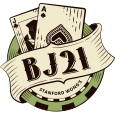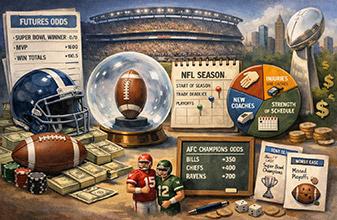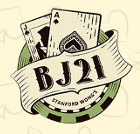The Art of Deception: Detecting and Mastering Bluffing In Poker

Have you ever wondered why some gamblers make more money than others when playing poker or blackjack games for real money? In such situations, it seems like even the best players are unable to beat the hands of those you’ll otherwise consider amateurs.
This shows that sometimes, it’s not about the skill level or strategy; most times, it all comes down to the simple art of deception called bluffing.
Bluffing is an invaluable skill every poker player needs to learn because it can significantly affect your gambling success.
It is an art form that gives players an advantage, but only if they are able to execute it flawlessly.
Psychology Behind Bluffing
Bluffing is an invaluable skill that involves attempting to mislead others, making them believe something untrue. In poker, it means placing a wager or a raise with a hand that is often lesser than your opponent’s. Doing so aims to make them believe you have the better hand, inducing them to fold and allowing you to win the pot.
It’s important to note that the psychology of bluffing is as important as the act itself because it’s not just about pretending to have a good hand. It’s also about projecting confidence, making quick decisions, and reining your emotions in the heat of the poker game. Sadly, The latter part is the aspect many players fail to perfect because it’s often hard to keep your emotions in check when money is on the line.
As a result, their facial expressions often give them away, as opposed to the goal of exuding faux confidence. A skilled bluffer should, however, be able to project a solid and confident demeanor, maintaining a stoic poker face.
The Significance of Bluffing in Poker
The act of bluffing in a poker game holds so much weight because it can make or mar your gambling session experience. It’s a case of risk-to-reward, where a perfectly timed bluff implies substantial payouts for the bluffer, while a poorly executed bluff results in a huge loss. However, this is not the only way bluffing holds significance in poker.
Bluffing also manipulates your opponents into thinking they have figured out and understand your playing style. For instance, making a big bluff that results in a loss may plant doubts in your opponent’s mind, making him hesitate to call your bluff the next time you play. This way, the art of deception becomes a tool that allows you to control the flow and speed of the game.
Recognizing a Bluff: The Give Away Signs
As mentioned earlier, bluffing is a skill that must be well-timed to be executed perfectly. Those who can’t execute it at the right time get caught due to the following giveaways.
- Body Language: If the opponent begins to fidget and avoid eye contact, it’s a sign of a bluff. Nervous tics like nose itching, knuckle cracking, etc., can also be signs of a bluff.
- Inconsistent Betting Patterns: Players about to bluff often deviate from their usual gaming style. They may begin to rise without a strong hand or even stake more money. If you notice this, then your opponent is about to make a bluff.
- Read Your Opponent’s Emotions: While nervous tics are a giveaway, unusual calmness can mean a bluff is on the way. Such confidence may imply that the player is bluffing with a strong hand, while uncharacteristic anxiety may mean the player has a weak hand.
While these detection strategies are valuable, remember that they are not always foolproof. Consider other factors before calling a player’s bluff.
Tips to Pull Off a Successful Bluff
Here are some tips and tricks to pull off a bluff and manipulate your opponent into folding:
- Know When to Bluff: Bluffing shouldn’t be done erratically without a clear plan. Wait for the right moment when the pot is large enough to justify a bluff and take the dive.
- Build and Maintain a Convincing Image: Make sure you have a convincing image established already so when you bluff, the opponent will be likely to fold. Also, when bluffing, place a convincing but consistent bet. Ensure it’s just large enough to intimidate opponents but not too large that it makes them suspicious that it’s a bluff.
- Remain Calm and Confident: Calmness is synonymous with keeping a cool head and maintaining a perfect poker face. Learn to suppress your emotions, maintain an unreadable facial expression, and focus on your strategy.
- Know Your Opponents: Is your opponent the type that doesn’t hesitate to call a bluff? Or are they more likely to fold when you make a bluff? Use this information to inform your strategy so you can adjust accordingly and maximize your advantage.
- Be Ready to Fold: Remember that bluffing is a risky venture, and you will not always get the better of your opponent. In such instances, don’t hesitate to back down, especially when it’s clear that your opponent has detected your bluff.
Last Words
The art of deception is an essential aspect of poker, requiring skill, confidence, strategy, and a good poker face. Thus, to consistently pull off successful bluffs, you need to sharpen your deceptive skills and never underestimate your opponent. Remember, while bluffing may not be a sure road to success, it’s an excellent strategy to boost your winnings when playing a round of poker.











Please log in or register to leave a comment